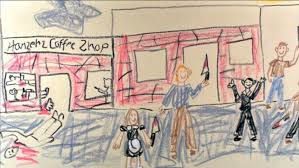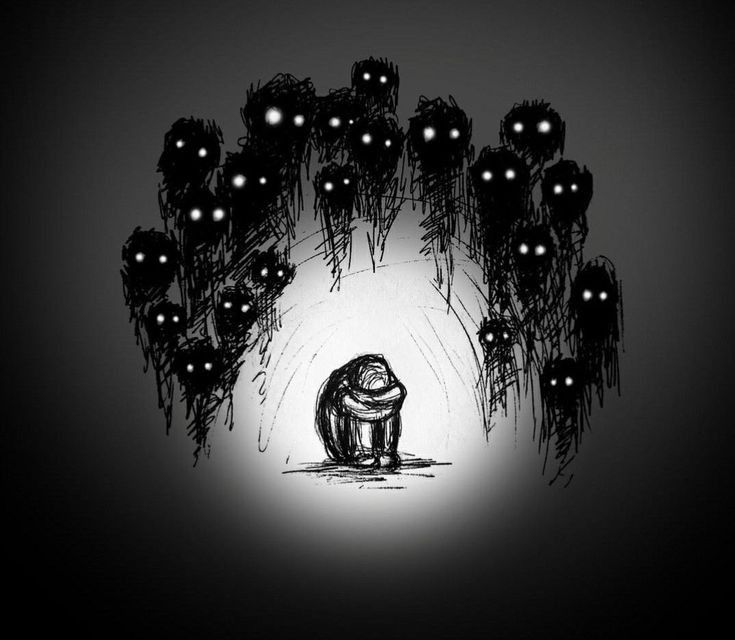Is Emotional Detachment and Extremism the New Norm for Our Youth?
- Carehaven Initiative
- Aug 21, 2025
- 6 min read
BY NAFISA AHMED

Have you ever wondered since when numbness and extreme radical behaviorism stopped being just a ‘phase’ and turned into the baseline of characteristics of our youngsters?
In today’s world where children and teenagers are continuously exposed to the toxic socioeconomic influences, political and global instabilities, and digital developmental risks, it is no surprise that they are becoming radically numb and emotionally broken. This makes us question whether what our children and siblings have are truly just habits or spiraling into a deeper emotional extremism that can potentially affect the future irreversibly. The Netflix Series “Adolescence” provides a stark glimpse of what may become the outcome if this is not handled with urgency and care. While the Netflix show might have been fictional, it did present us with the reality of how children are resorting to extremist activities indirectly as well as through youth violence due to the overload of the chaotic havoc around them physically and digitally.
The World that has them Trapped
No matter how young one child is, it is no lie that they are affected by real world chaos and decisions made by the adults. According to a 2021 CDC report, around 37% of high schoolers are reported to be mentally unwell and 44% surveyed to feel consistently sad and loss of hope. It can just be the sociopolitical hate or bias they might see in their family or parents, which can systematically turn into one of their own persona. Digital overload, sociopolitical crises, cultural influence of desensitization, environmental and you name it parental instabilities all can blend into one big tsunami for the emotional side of our youth. The American Psychological Association states that repeated exposure to such violent and emotionally harmful content can reduce emotional sensitivity and influence youth to disassociate like laughing or being overly satire with sufferings.
For further evidence, an early 2001 research by Cooley-Quille discovered that these numbing actions start as a coping mechanism and eventually result in a long term emotional pattern.
Another very recent trend we can notice in our social media is this peculiar identity confusion followed by over consumerism, toxic masculinity, social comparison, etc. These constant trend-chasing dehumanizes authentic responses and dulls emphatic pathways in children and adolescents.
More Than a Phase- What Callous Traits Actually Mean
Being Emotionally detached and aggressive can easily escalate from just mere mood swings. Often misunderstood and dismissed, these behavioral issues can bring indifference towards everyone, shallow empathy and compassion with a lack of remorse for their actions. The research by Docherty et al. (2016) conveys a clinical and neurological lens on this matter by emphasizing that these traits for prolonged periods of time can be measured as early signs of risk for antisocial behavior, especially if they are ignored.
“Children have never been good at listening to their elders, but they have never failed to imitate them.” -James A Baldwin

For instance, this line perfectly summarizes why children are so heavily affected by societal and technological changes. Psychopathy in youth doesn’t always come off as violent and vigorous. It may look like a teen who stays complacent or zones out when someone is sad or hurt in front of them. It may also start with a child who mimics the cruelty they see online without comprehending the emotional weight and its consequences. Or, even a young person who seeks humor in suffering. All these constant overexposure to chaos, overconsumption, digital personas can desensitize and emotionally burn them out. These patterns aren’t monstrous, but a signal of help.
Why This Needs Immediate Action
When these traits are left unchecked, it can lead to dangerous social mindsets and behaviors- potentially leading to a collapse of communal empathy. These includes:-
Low emotional regulation
Risk of developing psychopathy or antisocial behavior
Normalization of hate content
Social withdrawal
Aggression or emotional outbursts
So what can we do?
The good news is early intervention and care can essentially stop this. According to the The Carlat Psychiatry Podcast, Dr Feder assures that CU traits are completely treatable. What we need is the right support to rewire this survival mechanism children have equipped
.What Can We Do That Actually Helps?
One of the most common phrases we see people generally say is to snatch or stop giving them access to the internet. However, with our current advancements where digital space is a social lifeline, this advice is rather outdated and often cruel. So, while we can’t stop kids from using the internet, we can strengthen how they use it to interact. Psychologist Samantha Perstein shares the main remedy to this in her ACAMH podcast, which is emotionally aware parenting and therapy. She highlights emotion coaching as the basic essential of teaching children their names.
Emotion Coaching at home and school
Researchers like Flemming and psychologists like Samantha and Feder strongly believe that teaching children how to manage and validate their feelings is crucial, especially in this modern world.
They argue normalizing vulnerability is a powerful tool to prevent children going down that self brain-washing path.
PCIT-CU (Parent Child Interaction Therapy for Cu Traits)
This is a clinically proven method tailored for avoidant and distant children. They show credible outcomes on reducing callousness in kids through coaching, warmth, consistency and reconnection.
Digital Literacy Education
Studies have shown if schools implement digital literacy curriculum among teens, it helps them understand manipulation tactics, harmful algorithms and media propaganda.
Trauma Informed Teaching
Trained school counselors and teachers can provide a safer place and respond to emotional withdrawals compassionately.
Safe Peer Circles
Lastly, self awareness among teens and children themselves is very important. It is necessary to encourage them to prioritize their emotional well-being and guide them to create their own space spaces.
Key Takeaways
Our youth are not ‘difficult to deal with’ or ‘too much’- they are only tired and internally struggling during this quiet crisis. Instead of labelling these kids as broken or failures, we need to stand up for them and advocate for a healthy environment. If we don’t question and intervene now, we might raise a generation who won’t even know how to question at all. Call for Help
For Teens
Please remember that it is okay to feel overwhelmed at this time and want to disconnect. But don’t let this feeling of numbness and down be your everyday emotion. Talk to someone you trust. Maybe, write down how you feel or paint it out. Just know that there are people who will care for you and guide you to the resources. You can start slowly with small steps. You’re important and you matter.
For Adults (Parents and Educators)
Have you seen these signs around you? Then it is your duty to see this signal and start by standing beside them. You can listen to them, help them normalize their vulnerable emotions, and spread awareness to other adults to prevent them from labeling these kids. Empower emotion coaching and lastly always show empathy towards them. The earlier we can engage, the faster we can help
If you are emotionally struggling or know someone who is text to 741741 (https://www.crisistextline.org/) to connect with a trained service who are ideal to provide immediate support via texting. Or use https://www.teenline.org/ to have a conversation with peer trained listeners who will provide the support and resources you need.
Citations
Cooley-Quille, M. R., Boyd, R. C., Frantz, E., & Walsh, J. (2001). Emotional and behavioral impact of exposure to community violence in inner-city adolescents. Journal of Clinical Child & Adolescent Psychology, 30(2), 199–206. https://doi.org/10.1207/S15374424JCCP3002_7
Docherty, M., Boxer, P., Huesmann, L. R., O'Brien, M., & Bushman, B. (2016). Assessing callous-unemotional traits in adolescents: Determining cutoff scores for the Inventory of Callous and Unemotional Traits. Journal of Clinical Child & Adolescent Psychology, 45(2), 201–214. https://doi.org/10.1080/15374416.2014.979933
Feder, J., Goverman, M., & Donohue, M. R. (2023, October). Understanding callous and unemotional behaviors in children and adolescents [Audio podcast episode]. In The Carlat Psychiatry Podcast. The Carlat Report. https://www.thecarlatreport.com/blogs/2-the-carlat-psychiatry-podcast/post/4577-understanding-callous-and-unemotional-behaviors-in-children-and-adolescents
Perstein, S. (2023). Treatment of childhood disruptive behavior disorders and callous-unemotional traits [Podcast]. ACAMH. https://acamhlearn.org/Learning/Treatment_of_Childhood_Disruptive_Behaviour_Disorders_and_Callous-Unemotional_Traits/2675c3b6-fa6c-4037-aa70-00b7802e45b4
Centers for Disease Control and Prevention. (2021). Youth risk behavior survey (YRBS) data summary & trends report: 2011–2021. https://www.cdc.gov/healthyyouth/data/yrbs/pdf/YRBS_Data-Summary-Trends_Report2023_508.pdf
Fleming, G. E., et al. (2022). PCIT-CU intervention study on emotional regulation in children with CU traits. Child Psychology and Psychiatry Review https://rdcu.be/ev4Rs


Comments